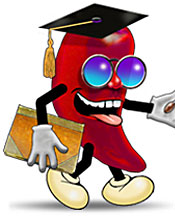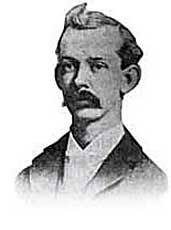 |
A Hot Sauce Guide Takes A Stand Against Bland!
|
 |
|
HOT SAUCE 101 Torrid Times Heat & Health How Hot Is Hot? The Big Chill Hall of Flame Global Warming Chile Peppers |
||
How Hot Is Hot? Ask Wilbur Scoville. Back in early 20th century, Wilbur Scoville contemplated a question that has plagued all seekers of hot food: how do you measure heat? He developed a scale based on the Scoville heat unit, which allows you to compare the heat factor in peppers and hot peper sauces. Because of Scoville, we can now scientifically measure how "hot" hot is instead of dealing with subjective opinions. After all, one man's "hot" may be another man's "not so hot." With the Scoville scale, you have a much more precise form of heat measurement and can compare pepper to pepper instead of comparing apples to oranges (see What's Hot Is Hot!). Back in early 20th century, Wilbur Scoville contemplated a question that has plagued all seekers of hot food: how do you measure heat? He developed a scale based on the Scoville heat unit, which allows you to compare the heat factor in peppers and hot peper sauces. Because of Scoville, we can now scientifically measure how "hot" hot is instead of dealing with subjective opinions. After all, one man's "hot" may be another man's "not so hot." With the Scoville scale, you have a much more precise form of heat measurement and can compare pepper to pepper instead of comparing apples to oranges (see What's Hot Is Hot!).Scoville developed the Scoville Organoleptic Test in 1912. Originally it did start out as a more subjective test than what we have today. Taste testers would partake of ground-up chiles that were increasingly diluted (and neutralized) by sugar water. The hotter the pepper, the more sugar water it took to quash the heat. So, the amount of sugar-water necessary to entirely cancel the heat in the pepper is the modern-day Scoville heat unit. For example, the hottest pepper recorded scored 577,000 Scoville heat units. This means it would take 577,000 cups of sugar water to neutralize the heat in 1 cup of that pepper. The original test was limited by human subjectivity since different people have different heat tolerances (see Feeling the Heat). The heat for the same kind of pepper can also vary tremendously depending on how it's grown and when it is harvested. Today, the Scoville heat unit is still the unit of measurement for heat and through advancing technology, it's much more scientific than what Wilbur originally devised. (Don't blame Wilbur, he did the best he could with what was available at the time.) Today, instead of relying on the human palate, Scoville testing uses High Performance Liquid Chromatography or HPLC. During process, the capsaicinoids, which pack a pepper with heat, are extracted. They are then placed in the HPLC device and analyzed. The HPLC can read the amount of capsaicinoids in the pepper, as well as differentiate between individual varieties (see How Hot Is That Pepper?). This analysis is then converted into the better-known Scoville unit. |
||
|
A division of Sparky Boy Enterprises Copyright © 2006. All rights reserved. |
||